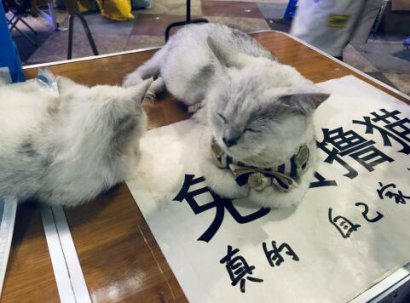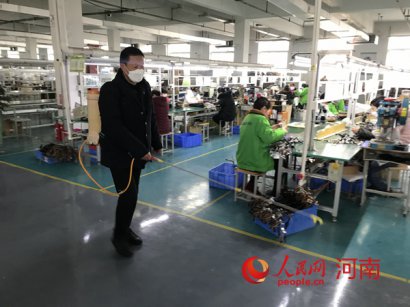(3)社会整体在发展进步,与父辈一代相比,二代流动人口在各方面的条件也在改善,但是与同龄的城市群体、农村群体相比,他们改善的速度更快还是更慢?
(4)教育是实现向上社会流动的重要因素,但公立学校的门槛以及高考的限制或许切断了二代流动人口通过教育实现流动的途径。二代流动人口的教育是一个重要的研究议题。
(5)中国各城市房价上涨对流动人口住房条件的影响以及对二代流动人口社会融合的影响。
参考文献:
[1]段成荣,杨舸,张斐,等.改革开放以来我国流动人口变动的九大趋势[J].人口研究,2008(6):30-43.
[2]国家统计局.2015年国民经济和社会发展统计公报[Z/OL].[2016-07-01].http://www.stats.gov.cn/tjsj/zxfb/201602/t20160229_1323991.html.
[3]王春光.新生代农村流动人口的社会认同与城乡融合的关系[J].社会学研究,2001(3):63-76.
[4]罗霞,王春光.新生代农村流动人口的外出动因与行动选择[J].浙江社会科学,2003(1):109-113.
[5]刘传江,徐建玲.第二代农民工及其市民化研究[J].中国人口·资源与环境, 2007(1):6-10.
[6]刘传江.新生代农民工的特点、挑战与市民化[J].人口研究, 2010(2):34-41.
[7]段成荣,马学阳.当前我国新生代农民工的“新”状况[J].人口与经济,2011(4):16-22.
[8]梁宏.生命历程视角下的“流动”与“留守”——第二代农民工特征的对比分析[J].人口研究,2011(4):17-28.
[9]王春光.对新生代农民工城市融合问题的认识[J].人口研究,2010(2):31-35.
[10]张庆武,卢晖临,李雪红.流动人口二代社会融入状况的实证研究——基于北京市的问卷调查分析[J].中国青年研究,2015(7):61-67.
[11]PARK R E. Human migration and the marginal man[J]. American Journal of Sociology,1928,33:881-893.
[12]WARNER W L, STROLE L.The social systems of American ethnic groups [M]. New Haven, CT: Yale University Press, 1945:28-32, 285-296.
[13]GORDON M M. Assimilation in American life: the role of race, religion, and national origins[M]. New York: Oxford University Press, 1964:60-83.
[14]GANS H J. Introduction[M]//SANDBERG N. Ethnic ldentity and Assimilation: The Polish Community. New York: Praeger Publishers, 1973:173-192.
[15]SANDBERG N C. Ethnic identity and assimilation: the PolishAmerican community [M]. New York: Praeger Publishers, 1974:1-88.
[16]GANS H J. Symbolic ethnicity: the future of ethnic groups and cultures in America [J]. Ethnic and Racial Studies,1979, 2(1):1-20.
[17]GANS H J. Secondgeneration decline: scenarios for the economic and ethnic futures of the post-1965 American immigrants[J]. Ethnic and Racial Studies, 1992,15(2): 173-192.
[18]HIRSCHMAN C, FALCON L. The educational attainment of religioethnic groups in the United States[J]. Research in Sociology of Education and Socialization,1985,5:83-120.
[19]PERLMANN J. Ethnic differences: schooling and social structure among the Irish, Jews, and Blacks in an American city, 1988-1935 [M]. New York: Cambridge University Press,1988:23-42.
[20]LANDALE N S, OROPESA R S. Immigrant children and the children of immigrants: interand intragroup differences in the United States[R]. Research Paper 95-02, East Lansing: Population Research Group, Michigan State University,1995.
[21]ZHOU M. Segmented assimilation: issues, controversies, and recent research on the new second generation [J]. International Migration Review, 1997, 31(4): 975-1008.
[22]GANS H J. Comment: ethnic invention and acculturation: a bumpyline approach [J]. Journal of American Ethnic History, 1992, 11:42-52.
[23]ALBA R D, NEE V. Rethinking assimilation theory for a new era of immigration [J]. International Migration Review,1997, 31(4):826-874.
[24]PERLMANN J, WALDINGER R. Second generation decline? children of immigrants, past and
present: a reconsideration [J]. International Migration Review,1997, 31(4):893-922.
[25]PORTES A, ZHOU M. The new second generation: segmented assimilation and its variants [J]. Annuals of the American Academy of Political and Social Science, 1993, 530:74-96.
[26]ZHOU M. Growing up American: the challenge confronting immigrant children and children of immigrants [J]. Annual Review of Sociology, 1997, 23:63-95.
[27]XIE Y, GREENMAN E. The social context of assimilation: testing implications [J]. Social Science Research, 2011, 40: 965-984.
-
 羽毛球亞錦賽諶龍陳雨菲分別晉級男女單決賽新華社武漢4月28日電正在武漢舉行的2018羽毛球亞錦賽28日結束半決賽較量。諶龍淘汰印度選手普蘭諾伊晉級,他將與
羽毛球亞錦賽諶龍陳雨菲分別晉級男女單決賽新華社武漢4月28日電正在武漢舉行的2018羽毛球亞錦賽28日結束半決賽較量。諶龍淘汰印度選手普蘭諾伊晉級,他將與 -
 巫山當陽大峽谷國際戶外運動挑戰賽開賽參加2018中國·巫山當陽大峽谷國際戶外運動挑戰賽的選手們。(受訪者供圖) 7月21日,2018中國·巫山當陽大峽谷國際
巫山當陽大峽谷國際戶外運動挑戰賽開賽參加2018中國·巫山當陽大峽谷國際戶外運動挑戰賽的選手們。(受訪者供圖) 7月21日,2018中國·巫山當陽大峽谷國際 -
 8月再见9月你好说说励志语录 八月再见九月你好8月再见9月你好说说励志语录 八月再见九月你好美文经典句子
8月再见9月你好说说励志语录 八月再见九月你好8月再见9月你好说说励志语录 八月再见九月你好美文经典句子 -
 塞巴斯蒂安库尔茨热评: 我困惑了(新浪微博) 161天19小时51分5秒前 现实,是最好的老师。[允悲][允悲][允悲] 灵境先生(财新网Android版) 30分12秒前 里面大部分专家也是来
塞巴斯蒂安库尔茨热评: 我困惑了(新浪微博) 161天19小时51分5秒前 现实,是最好的老师。[允悲][允悲][允悲] 灵境先生(财新网Android版) 30分12秒前 里面大部分专家也是来 -
 扶溝首例非法獵捕殺害野生動物刑事附帶民事公益訴訟案開庭審六名男青年為了滿足口腹之欲相約到郊外打野雞嘗鮮,不料觸犯法律被公安機關逮個正著,一時的嘴饞終至釀成嚴重
扶溝首例非法獵捕殺害野生動物刑事附帶民事公益訴訟案開庭審六名男青年為了滿足口腹之欲相約到郊外打野雞嘗鮮,不料觸犯法律被公安機關逮個正著,一時的嘴饞終至釀成嚴重